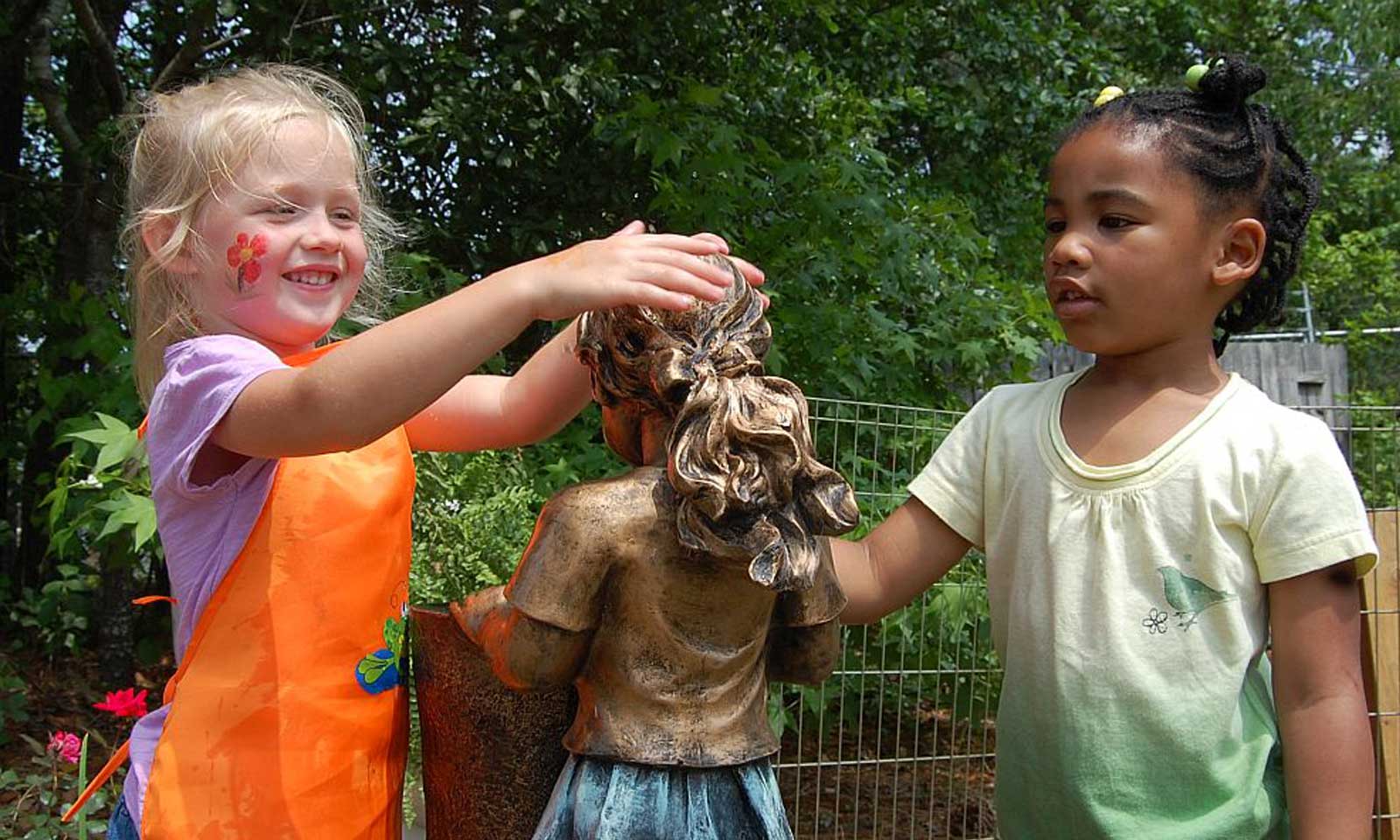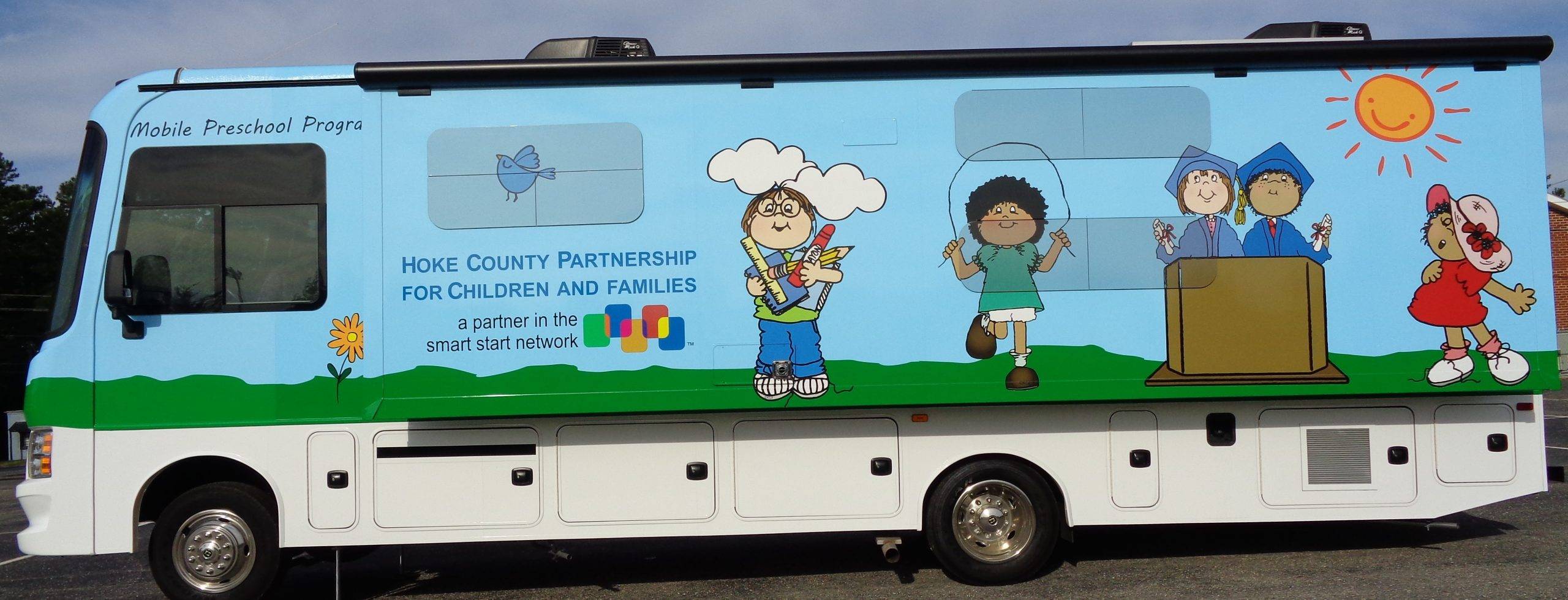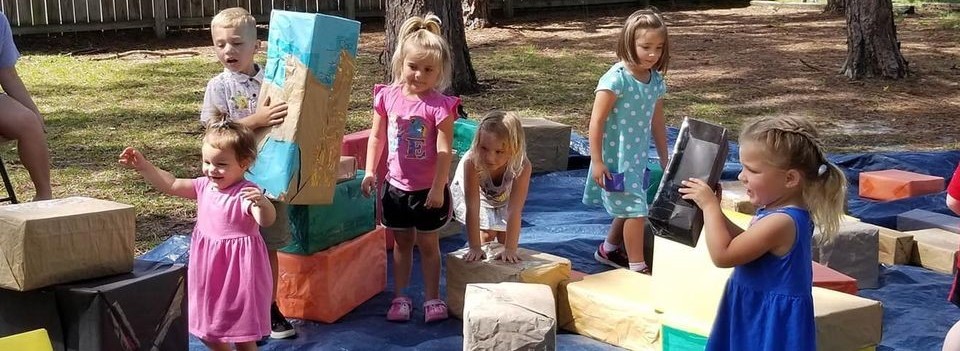Uncategorized
now browsing by category
Children and Sleep
Children and Sleep
No one starts the day off on the right foot without enough sleep! Sleep is essential, yet, according to the National Sleep Foundation, nearly 30 percent of children and 75 percent of teenagers are not getting the right amount of sleep.
How much sleep does a child need each night according to age?
Sleep patterns and behaviors change in children from birth to adulthood. Children’s sleep varies greatly, but the table below is a good overall guide for the recommended total sleep per day.
Newborns, 0-1 year: 16 hours
Toddlers, 1-2 years: 11 to 14 hours
Preschoolers, 3-5 years: 10 to 13 hours
School-aged, 6-13 years: 9 to 11 hours
Teenagers, 14-17 years: 8 to 10 hours
Based on their genetic and physiological needs, it may be appropriate for some children to sleep an average of one to two hours more or less than the recommended amount.
Why is adequate sleep important for a child?
Sleep is especially important for children because it impacts mental and physical development. Sleep is the time for restoration and for children’s bodies to recharge and retain the information they have learned throughout the day. During deep non-REM sleep, the body’s energy is restored, growth and repair occur, and important brain development hormones are released.
Sleep deprivation stifles the immune system, negatively affects mood and behavior, and can also hinder a child’s school performance. Good sleep is a vital component of a healthy lifestyle.
What are children’s most common sleep disorders, and how are they treated?
The most common sleep disorders in children include nightmares, night terrors, insomnia, and parasomnias (including sleep talking and sleepwalking). These disorders can sometimes be genetically related. Most sleep disorders are treated by recommending good sleep hygiene (see below) and a consistent bedtime routine.
One of the biggest sleep disrupters is the tendency for some children to go into their parent’s room in the middle of the night for comfort. Try to avoid this as much as possible.
It is also important to note that children should not snore. Talk to your pediatrician if your child snores, as this may be a sign of sleep apnea and may be related to a medical problem.
What can parents do to help ensure their children get a proper night’s sleep?
Consistency is key. Children should go to sleep at a consistent time every night and wake up at approximately the same time every morning. This is often more difficult in the summer, but try to adhere to a schedule as much as possible!
The bedroom is a place for sleeping. Therefore, it is essential to remove distracting elements (books, TVs, games, light-up toys, and electronic devices) from the room.
Always ensure children are eating a well-balanced diet and getting plenty of exercise!
Babies and Bed Sharing
The American Academy of Pediatrics (AAP) strongly recommends against bed sharing with an infant. Bed sharing is when someone sleeps on the same surface as a baby, such as a chair, sofa, or bed. Many parents bed-share for different reasons. Some do so on purpose, and some do so on accident. The majority of infant sleep-related deaths in North Carolina are associated with bed-sharing.
Below are factors that increase the risk of infant death when bed-sharing:
If Your Baby:
- Was born premature (less than 37 weeks)
- Was born weighing less than 5lbs 8oz
- Is less than 4 months old
- The mother of the baby smoked during pregnancy.
If the Person(s) Sharing the Sleep Space with Baby:
- Smokes or vapes (even if you do not smoke/vape in bed)
- Has taken any medicines or drugs that might make it harder for you to wake up.
- Drank any alcohol.
- Is not the baby’s parent.
If the Sleep Space:
- Has pillows/blankets/loose bedding or a soft mattress (like memory foam or pillow top)
- Is a couch or recliner
- Has multiple people in the bed, including other children or pets
If you answered yes to any of these factors, it is strongly suggested that you reconsider bed-sharing to keep your baby safe. Instead, consider using a safety-approved crib, bassinet, or pack-n-play beside your bed or a safety-approved bedside sleeper attached to your bed.
Regardless of Where Baby Sleeps, ALL Babies Should Sleep–
- On their back
- On a firm, flat surface
- In a smoke/vape-free space
- With NO blankets, pillows (including nursing pillows), or other extra items near them
Swaddling: Is it Safe for Your Baby?
New parents often learn how to swaddle their infant from the nurses in the hospital. A thin blanket wrapped snugly around your baby’s body can resemble the womb and help soothe your newborn. When done correctly, swaddling can be an effective technique to help calm infants and promote sleep.
However, if you plan to swaddle your infant at home, you must follow a few guidelines to ensure safety.
Back to sleep:
To reduce the risk of Sudden Infant Death Syndrome or SIDS, it’s crucial to place your baby to sleep on their back–every time you put them to sleep. This may be even more important if your baby is swaddled. Some studies have shown an increased risk of SIDS and unintentional suffocation when babies are swaddled if they are placed on their stomachs to sleep or if they roll onto their stomachs. If babies are swaddled, they should be placed only on their backs and monitored so they don’t roll over.
When to stop swaddling-
Stop swaddling as soon as your baby shows signs of trying to roll over. Some babies start working on rolling as early as 2 months of age, but every baby is different. There is no evidence of SIDS risk related to the arms swaddled in or out.
How to swaddle correctly:
- Use only a thin blanket for swaddling.
- To swaddle, spread the blanket out flat, with one corner folded down.
- Lay the baby face-up on the blanket, with their head above the folded corner.
- Straighten their left arm and wrap the left corner of the blanket over your baby’s body, tucking it between their right arm and the right side of their body.
- Then, tuck the right arm down and fold the right corner of the blanket over her body and under their left side.
- Fold or twist the bottom of the blanket loosely and tuck it under one side of the baby.
- Make sure their hips can move, and the blanket is tight. You want to be able to get at least two or three fingers between the baby’s chest and the swaddle..
Babies and Their Senses
Babies are born with all five senses: hearing, sight, touch, taste, and smell. However, some are more developed than others at first. While sight takes longer to develop, others like hearing, touch, taste, and smell are keen from day one. Babies already have an acute sense of hearing in the womb. Think of the five senses as the essential tools your baby will use to learn about her environment. The more you understand your baby’s five senses, the more you will appreciate her cognitive development. Here are some fun facts you might not have known.
Hearing
A baby’s hearing starts developing in the womb. Around 23 weeks, babies can hear sounds from inside the womb. At 35 weeks, all parts of the ear are completely formed. After birth, her hearing will continue to develop.
Babies are tuned into high-pitched, human voices. A baby immediately recognizes her mother’s voice since she’s heard it in the womb for nine months. She’ll start looking for the source of the sounds she hears at four months. At six months, she’ll try to imitate the sounds she hears. Around her first birthday, she will hit a new milestone in saying single words like “ma-ma” and “da-da.” Fun fact: her hearing will continue to develop until age 12.
Sight
Unlike a baby’s hearing, her sight is much less developed. During her first three months, she’ll experience blurry vision. It’s not that her eyes aren’t physically capable of seeing; it’s that her brain isn’t ready to process so much visual information yet. Her vision will become much clearer as she ages and her brain develops. She can start to see differences in color at one month old. At three months, she’ll develop depth perception. Her clarity and depth perception are close to full development at eight months. She might see subtle color changes later on.
Touch
Touch is vital in how your baby bonds and communicates with you. It’s another sense that develops in the womb as early as the seventh or eighth week of pregnancy. As a newborn, she’s very tuned into her sense of touch. Your touch will soothe and relax her and enhance her growth and comfort. Your baby’s skin is sensitive, but her mouth, cheeks, face, hands, abdomen, and the soles of her feet are the most sensitive. Skin-to-skin contact is an important part of bonding and communication. The grasping reflex with her hand allows her to respond to touch. Touch extends to a baby’s mouth, so she loves putting things in hers. It helps her explore. Your baby enjoys the gentle stroking of her skin. Fun fact: Close contact with the baby benefits parents as well. Holding her close releases oxytocin, also known as the love hormone.
Taste
A baby’s sense of taste starts developing in the womb. At nine weeks, she already has the tiniest taste buds and a fully formed mouth and tongue. She’ll taste her first flavors inside the womb through the amniotic fluid. As a newborn, her sense of taste is highly developed. She highly prefers sweet over sour, salty, and bitter flavors. Her sense of taste will improve as she grows older. Your baby will often favor foods she was exposed to inside the womb. Your baby’s taste preferences are not genetic. Baby can detect a difference in breast milk taste depending on what you eat. This can also positively affect her taste buds, introducing her to various foods before she can eat them as solids.
Smell
Her sense of smell is closely connected to her sense of taste. This is because she tastes the foods you eat through the amniotic fluid and smells them. Like taste, her sense of smell is also highly developed as a newborn. Smell is processed by the memory-controlling part of the brain, which is why there are strong associations between particular scents and experiences. Smelling the same scent later on may trigger a memory. Making up for her still-developing sense of sight, she recognizes you by your scent. The smell of your breast milk is appealing to her. You release higher oxytocin levels when you and your baby smell each other during cuddle time. Stronger aromas can interfere with her sense of taste, so be sure to avoid strong perfumes while breastfeeding.
How to Make Holidays Kid Friendly

How to Make Holidays Kid Friendly
We are reminded, every year at this time, how difficult holidays can be for people who are lonely or alone. But let’s be honest: even for families rich in children, holidays can be stressful—both for parents and kids.
Why are holidays so fraught? Because expectations are heightened, and holidays can feel like a test of how happy and successful your family is. And if you have children with psychiatric or learning disorders, even favorite traditions can turn into a test of stamina and patience. Here are some tips to help minimize stress and make the holidays more fun and fulfilling.
1. Be open to change.
Talk with your kids about your traditions — which ones they love and which you might evolve to make them more fun or memorable for everyone. This is especially important when family dynamics have changed because of divorce, a new marriage or sibling, or a death in the family.
2. Be realistic.
Factoring in kids’ limitations when you make plans will reduce stress on everyone. Kids who are anxious about meeting new people — or even encountering the extended family — will need support and realistic expectations. Kids who have trouble with organization will need help to succeed at gift-giving. Children who tend to be impulsive need structure to minimize disruptive behavior. Not overestimating your kids’ patience and ability to focus will help you enjoy yourself more, too.
3. Prep kids for changes in routine.
Holidays represent a change in a family’s normal schedule, and for some kids that’s unsettling. Preparing them for changes in their routines — what to expect and what you expect of them—will help head off meltdowns. If you’re traveling, bring familiar toys and books, and make sure you have quiet one-on-one time like reading before bed.
4. Give yourself a break.
Don’t stretch yourself too thin trying to create the “perfect” holiday season. Decide what is important, prioritize, and say “no” to what you can’t handle.
5. Be sure to laugh.
Kids pick up their parents’ stress and tension, so they’re more likely to be irritable if you are. Have a sense of humor, enjoy your kids for who they are, and keep in mind that what you’ll all remember when it’s over is likely to be the unexpected moment when everybody was relaxed, not the brilliantly choreographed party, dinner, or outing.
Taken from https://childmind.org/article/how-to-take-the-stress-out-of-the-holidays/
10 Benefits of Dress-up Play
1. Brain Building – Dress-up engages your child’s brain and memory. Dramatic play requires kids to remember what they’ve seen or heard. They remember how their parents behave when performing household chores when they are imitating them. Or they recall the details of a fairy tale they’ve heard before acting it out.

2. Vocabulary Building – Dress-up play builds vocabulary as a child decides what his or her character would say. It gives them a chance to expand their vocabularies with words and phrases that they might have heard in stories, but wouldn’t ordinarily use. Children may then begin to use these new words in conversations.
3. Problem-Solving – Who’s going to be the doctor? Who’s going to be the patient? Children must make decisions when they engage in dress-up play. They practice problem-solving problems when deciding on what costume elements and props each character needs to act out a scenario.
4. Empathy – When a child is engaged in role-play, it helps her see the world through another’s eyes which increases empathy – whether pretending to be a parent nurturing a baby, a doctor taking care of an injured patient, or a firefighter putting out a fire. Dramatic play helps children understand the role that helpers play in our lives.
5. Emotional Development – Children are constantly confronted with scary situations that they don’t understand – whether witnessing an accident in real life or seeing violent images on TV. Children process their fears through play, which helps them make sense of the world, and overcome their feelings of helplessness. By allowing children to act out their fears through dress-up and role playing, we are helping their emotional development.
6. Motor Skills – Children develop fine motor skills by putting on dress-up clothes, whether buttoning a shirt, zipping up pants, or tying on a pirate’s bandana. They use their large motor skills when engaged in role-play, whether they are jumping like a superhero, running like a baseball player, or twirling like a ballerina.
7. Gender Exploration – When children choose costumes and characters to be, they are able to explore different gender identities and the behaviors of those characters. It is normal for children to want to act out roles that are traditionally associated with the opposite gender. A boy can be the/ one who takes care of the home and chores, such as cooking dinner, and a girl can be the one who is the police officer or firefighter.
8. Imitation – Children are naturally imitative creatures. They learn about the world by imitating the lives of the adults and others around them. Through dress-up and dramatic role-play, children explore the lives of other people by imitating their actions, feelings and words.
9. Socialization – Dress-up play encourages cooperation and taking turns. Children learn how to negotiate as they agree on stories and rules. They develop interest in others and learn how to give-and-take.
10. Imagination – Children’s imaginations are limitless, and have not yet been hardened and constrained by the “realities” of the world. Rudolf Steiner, the founder of Waldorf education, believed that imaginative play in early childhood is the key to creative thinking during the adult years. When children engage in dress-up play, their imaginations are given free reign. There is no limit to who, where, or what they can be.
Mobile Preschool Now Enrolling!
GUSS the Bus is getting ready to roll, bringing Smart Start to your neighborhood! Mobile Preschool is free to Hoke County residents ages 3-5. For more information call 910-904-5452, ext. 115 #hokesmartstart #hokechildren #hokecounty #mobilepreschool Application for 2023-2024
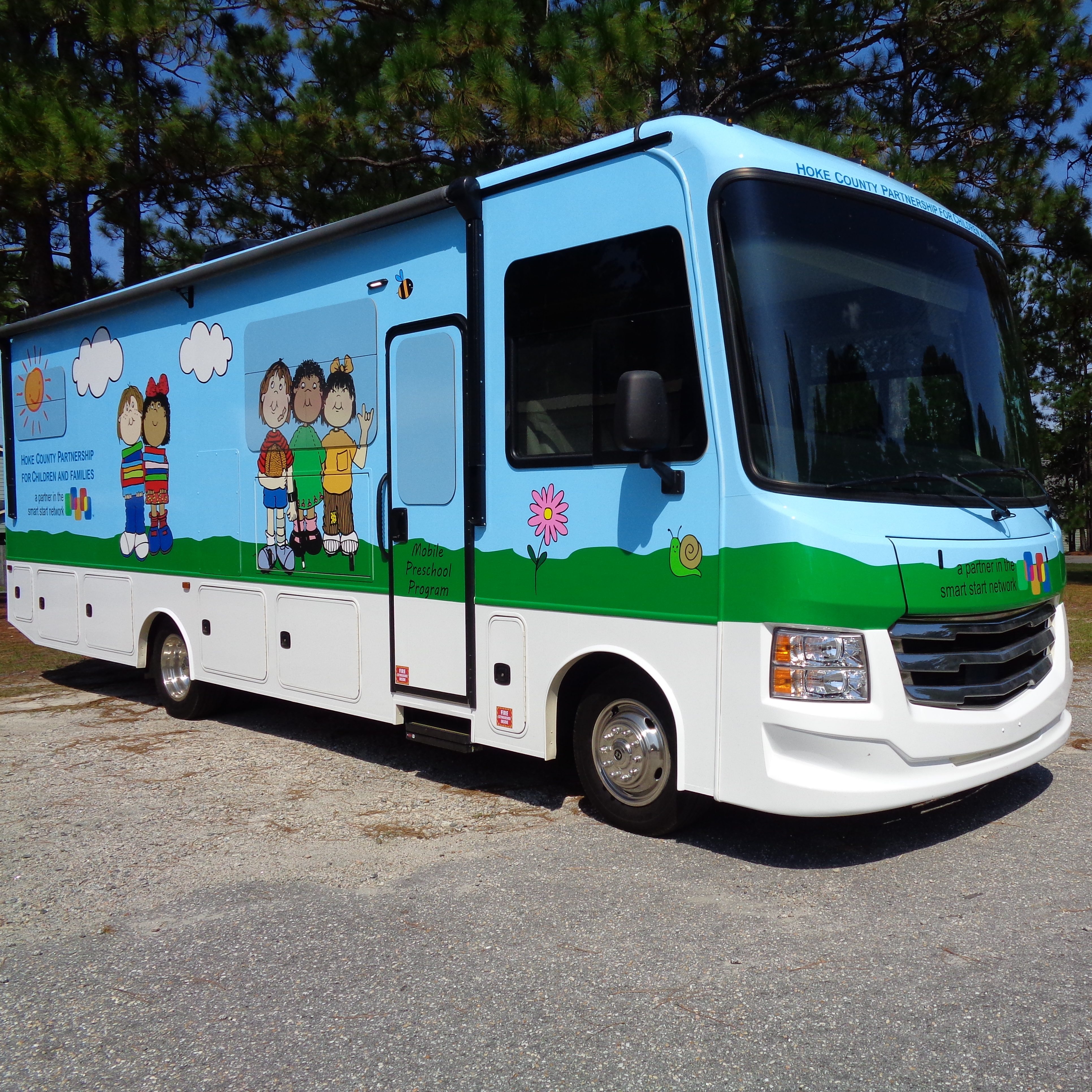
Talking With Children When Scary Things Happen
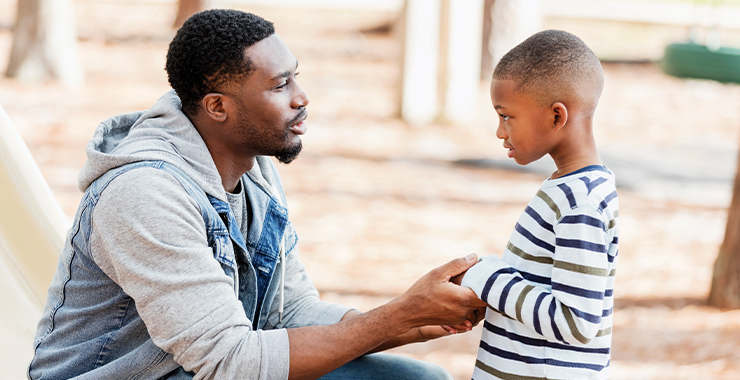
When scary or violent things happen in the world, whether thousands of miles away, in your state, your town, or your home, children look to the adults that surround them to help them feel safe and understand what is happening. This can feel tricky and challenging, particularly when the adults are also responding to and making sense of the same experience. Safe and supportive adults are the best predictor of resilience in youth. These resources offer guidance to help you talk with children and youth after something scary or violent happens.
Talking With Children: When Scary Things Happen (En Espanol)
Helping Young Children With Traumatic Grief (En Espanol)
Water Fun

There’s nothing better than have fun in the sun by spashing in some water. You don’t need a fancy pool or special equipment, just kids and water! So slather on some sunscreen, and go get wet!
- Paint with water. Grab some real house paintbrushes and rollers and go to town painting the sidewalk!
- Make garden soup with some friends. Happy Hooligans had the kids pick their own flowers before getting started on the “soup”.
- Recycle old glue bottles as water squirters. This idea from Playdough to Plato has toddlers working on their fine motor skills while beating the heat.
- Add colorful ice to water, like Fun-A-Day. Watch as the ice melts into the rest of the water, the colors mixing to create new colors.
- Water the flowers and yard. If you have a way to collect rainwater for this activity, do it! Just remember to dump the water when you’re finished, because standing water will attract mosquitos, and no one wants that!
- Make sponge bombs! Cut clean sponges into strips, gather a bunch of them together in a star shape using a rubber band, and have fun bombing floating items in a kiddie pool or tub of water. Be prepared, this one gets really splashy!
Let’s Play Outside!

Playing in water keeps everyone cool – and has plenty of benefits
Remember summertime when you were a child? Think about the things you did. Playing outside all day, pretending, splashing, chasing your friends, riding bikes? Memories are made in summer!
There are so many activities that can be done outside it’s impossible to list them all.
Older children benefit from time alone exploring their environment – in a safe way of course.

Even the youngest child loves bubbles! Make your own bubble stuff! Use old wands, or make your own.
Disconnect to Connect
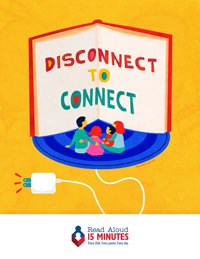
It’s been a long year of virtual school, work-at-home, frayed tempers, and frustrations. People, even within families, feel isolated from one another.
There’s an easy way to reconnect with your children. Invest 15 minutes a day to read to your child.
Reading aloud to babies and toddlers helps them learn that reading can be pleasurable. They love your voice and want to hear you, even if you don’t read all the words. Talk about the pictures.
Preschool children will want to be involved in the story – let them be! Ask them questions about the characters and situations. You’ll be surprised how much fun they have – and how much fun you have.
If you don’t have a lot of books available, you have several low or no-cost options.
- Dolly Parton’s Imagination Library provides one book a month to children from birth until their 5th birthday. The books are selected to be just right for the age of the child. Sign up at the link above, or call 910-848-2300.
- The Hoke County Partnership for Children and Families Resource Library offers membership for only $10 a year.
- If you live in Hoke County, you can get a library card for free. Contact the Hoke County Library at 910-875-2502.
Representation Matters
‘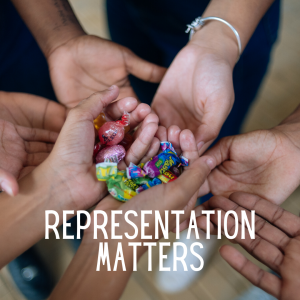 All children need to see themselves and their peers in the stories shared and discussed at school. Kids of color need diverse books because so often they do not see themselves in literature, and therefore feel marginalized, even invisible. White kids need diverse books because they see too much of themselves in literature and this may lead them to feel that they are the center of the world.” – The Collaborative Classroom
All children need to see themselves and their peers in the stories shared and discussed at school. Kids of color need diverse books because so often they do not see themselves in literature, and therefore feel marginalized, even invisible. White kids need diverse books because they see too much of themselves in literature and this may lead them to feel that they are the center of the world.” – The Collaborative Classroom
We’ve recently added books that speak to the beautiful diversity of our community to our resource library. Take a moment to come in and review these wonderfully written and illustrated books.
